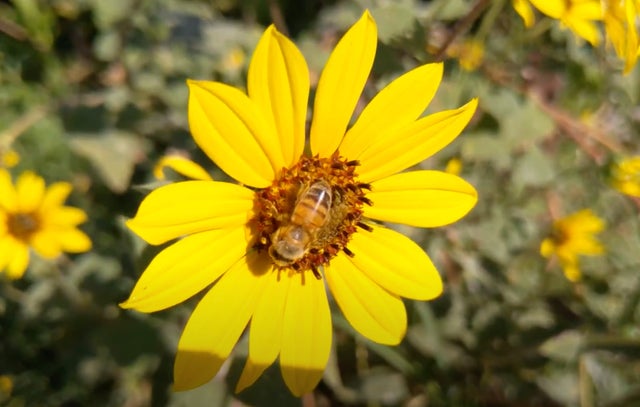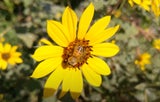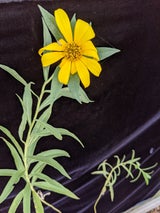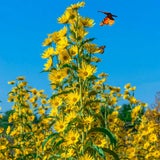- Pollinator Plants
- >
- 4" Maximillian Sunflower
4" Maximillian Sunflower
Helianthus maximiliani
The several tall, leafy, unbranched stems of michaelmas-daisy or maximilian sunflower grow to a height of 3-10 ft. Leaves are long and narrow, up to 10 inches near the bottom and as short as 2 inches near the top. They are alternate, coarse and hairy, slightly wavy on the edges, often folded lengthwise, slightly toothed and very pointed. Numerous yellow flower heads grow on their own stalks terminally and from leaf axils. The flower head is up to 5 inches across, with 15-19 ray flowers, deeply veined and slightly toothed on the tip. The center is 1 inch or more across, green to dark brown. These perennial plants can form large colonies. It was named for the naturalist Prince Maximilian of Wied-Neuwied, Germany, who led an expedition into the American West in the 1830s.
4" pot
Mature size: 3ft-10ft tall; 2ft-4ft wide
Light requirements: Full sun
Drought tolerant, attracts birds and butterflies



